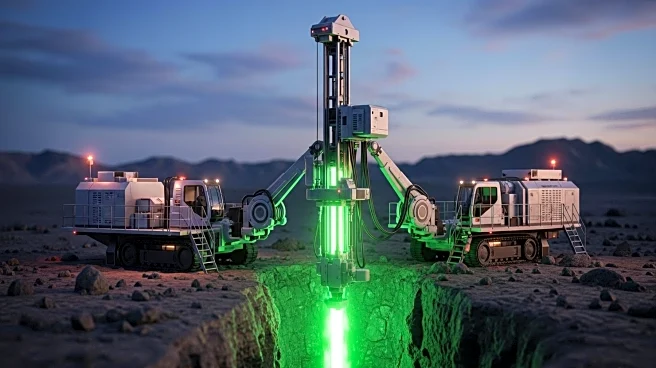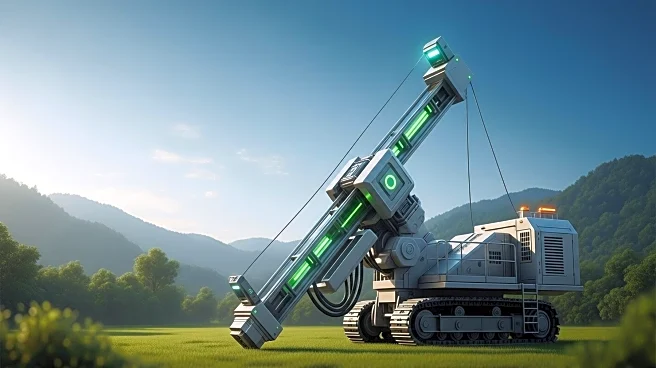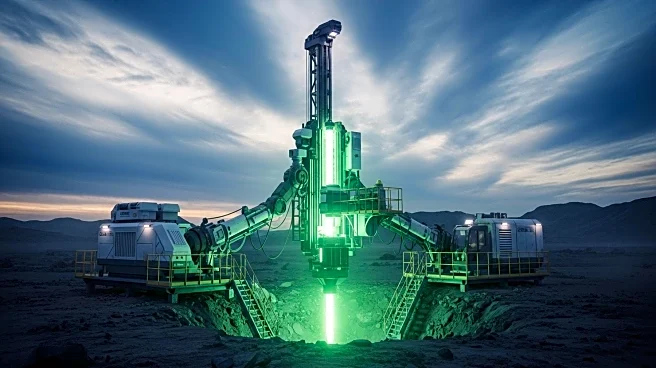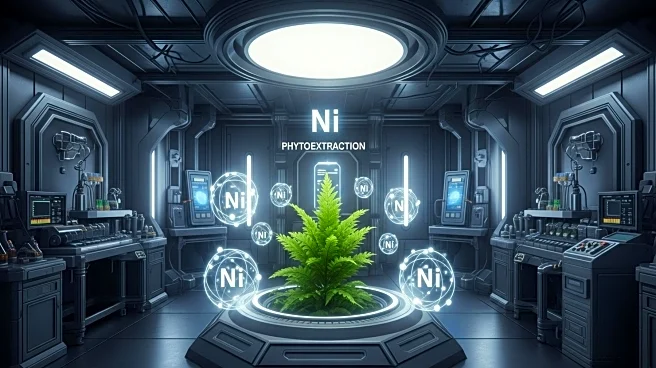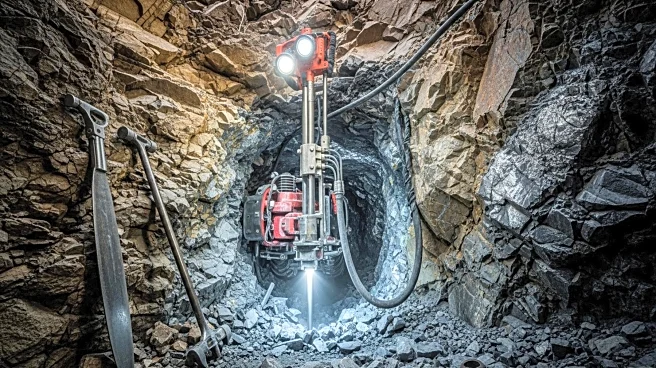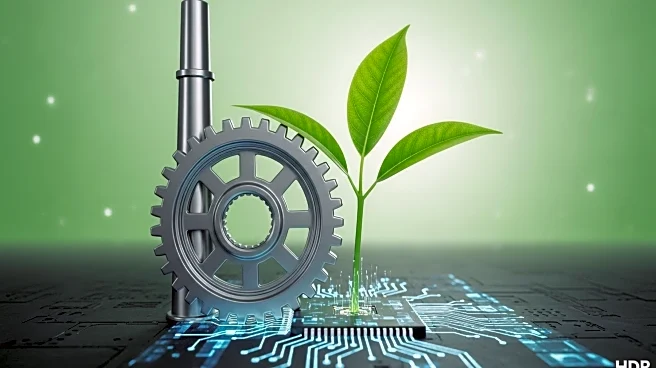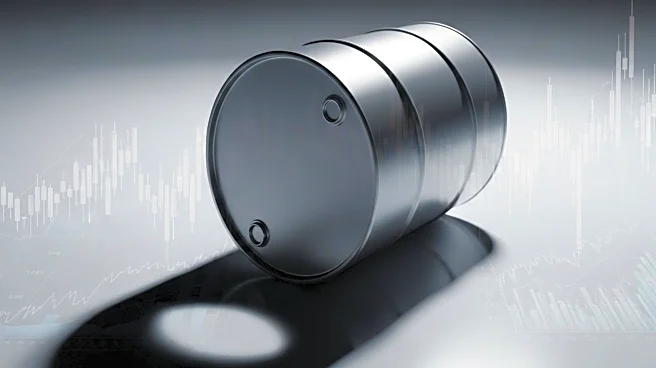What's Happening?
Coda Minerals, a mining company, has developed a process to significantly increase copper recovery rates from 55% to 95%. This advancement, detailed by Crux Investor, utilizes an ammonium chloride whole ore leaching process. Copper is a crucial component in various technologies, including electrical wires, electronics, electric vehicle batteries, and renewable energy systems. The International Energy Agency predicts that copper demand could more than double by 2040 due to the clean energy transition. Copper prices have risen from $8,000 to over $10,000 per ton, posing challenges for new companies. Coda Minerals CEO Chris Stevens believes this breakthrough could aid smaller-scale startups by reducing capital requirements and enhancing cash flow.
Why It's Important?
The breakthrough in copper recovery rates is significant for the mining industry and the broader economy. As copper demand increases due to electrification and clean energy initiatives, efficient recovery processes are crucial to meet supply needs. The rising cost of copper impacts manufacturers and consumers, making innovations like Coda Minerals' process vital for economic stability. Smaller companies could benefit from reduced capital requirements, fostering industry growth and competition. This development may also support global efforts to reduce pollution and combat climate change by facilitating the transition to cleaner energy sources.
What's Next?
Coda Minerals plans to proceed with the pre-feasibility study phase at its Elizabeth Creek Copper Project in South Australia. The company aims to further explore the potential of its recovery process and its application in copper and nickel mining. The industry may see increased interest in similar technologies, potentially leading to collaborations or investments. Stakeholders, including manufacturers and environmental groups, may monitor these developments closely, considering their implications for sustainable practices and economic growth.
Beyond the Headlines
The breakthrough could have ethical and environmental implications, as improved recovery rates may reduce the environmental impact of mining operations. Efficient resource utilization aligns with global sustainability goals, potentially influencing regulatory policies and industry standards. The development may also encourage innovation in other sectors, promoting a culture of technological advancement and environmental responsibility.

